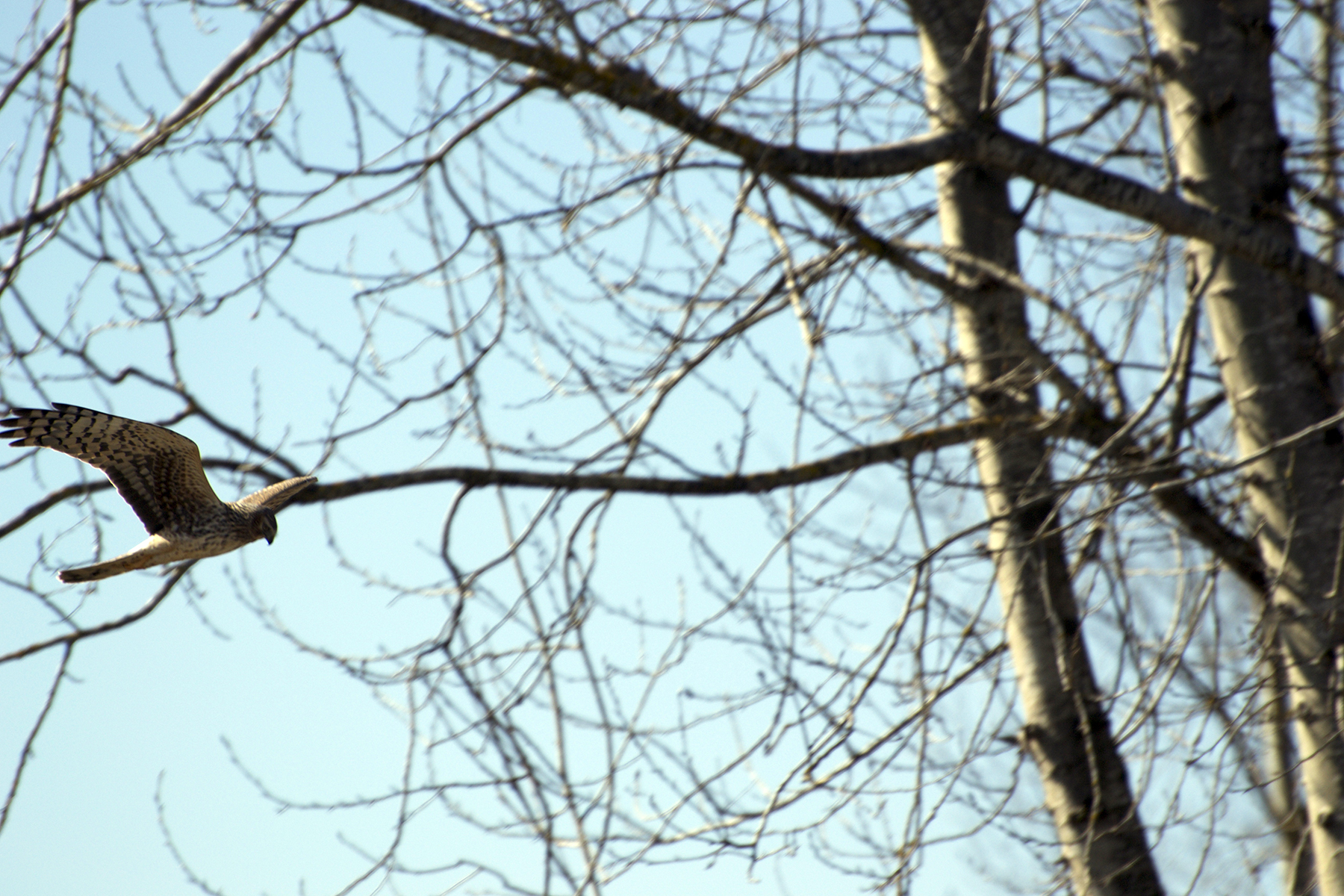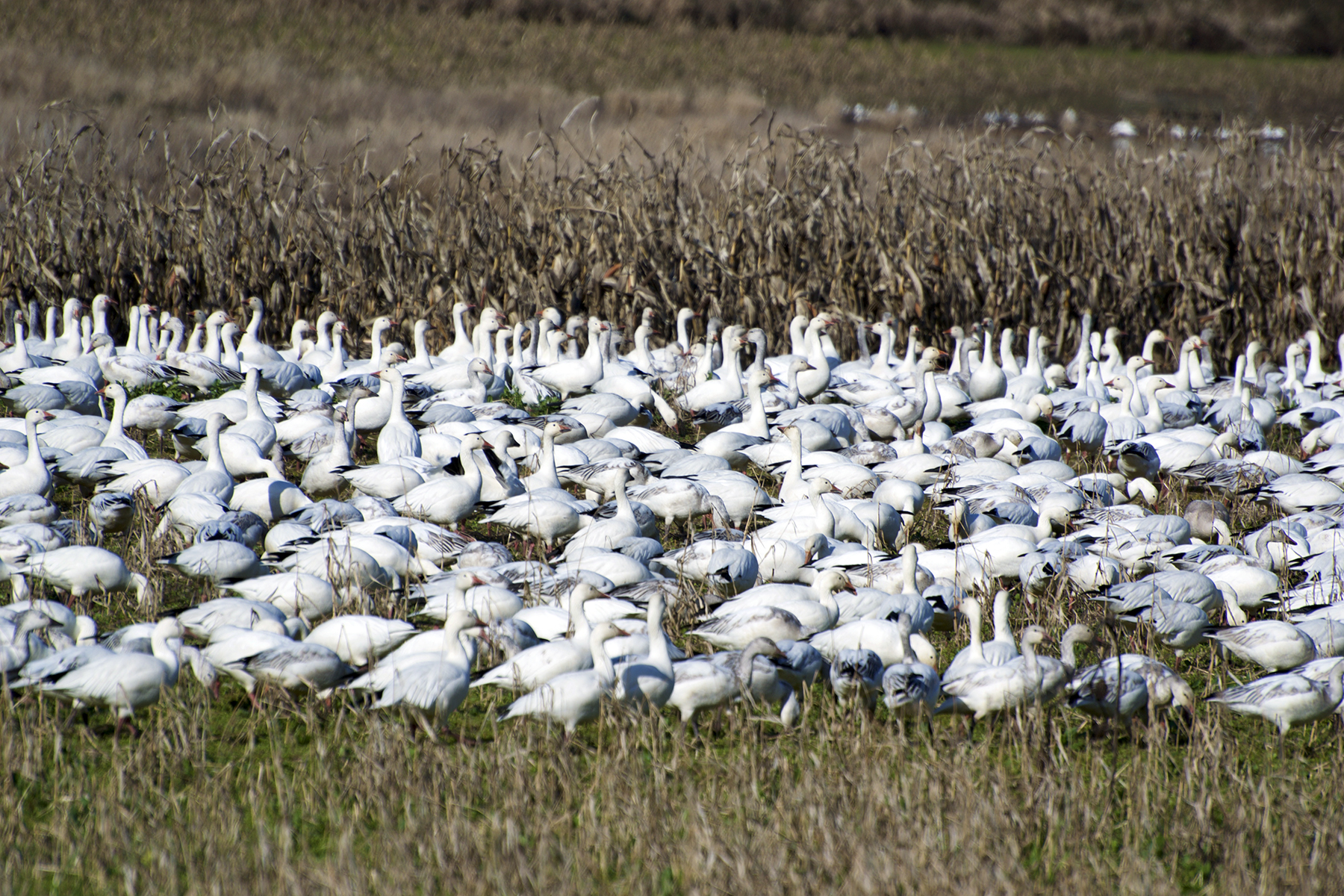What was I thinking. I did not bring rain paints. I wore my ancient, squeaky hiking boots that long ago stopped being waterproof. No plastic cover for my camera. And yet I followed the trail up coyote hill, despite the fact that misty sprays of rain soon turned into real showers.



It was the fault of all those herons, flying constantly in one direction our coming from there, ever since I had spotted them in the ponds. It was the lure of distant noise, increasingly louder when I approached a stand of tall trees at the western rim of the wetlands preserve.

I had found the heron rookery, an accumulation of nests in the fir trees, chicks squawking loudly, parents announcing their arrival with raspy, penetrating voices.
I crouched under a canopy of bushes away from the path, trying to get out of the downpour, camera peeking through the inside of my coat, unbuttoned in one place to let the lens through. I was quite a distance away, separated by a marsh, vision blurry from all the moisture in the air, in awe of the constant action.
Look closely how many gather in one tree.




Parents flying in to feed the babies, then reversing roles with those who had stood guard. A cacophony of bird calls announcing or assuaging need.
And then it went all quiet. As if the world stood still. Birds calmed, stoically standing in the rain, or crouching in the nests. All I could hear, all of a sudden, was the relentless drumming of the rain on the leaves above my head. One of those moments were your heart expands, with gratitude, while your soul is struck with slivers of disquietude.



*
In this week’s blogs I juxtaposed forms with lines, isolation with connectedness, and now, today, the natural with the staged. The heron photographs were snapshots, badly taken under challenging circumstances with layperson equipment. They caught a moment in time, captured as is in nature in all its blurry glory.

Contrast this with the work of Kylli Sparre, a young Estonian photographer, whose work is technically flawless, delightful in its creativity, and as choreographed as any of the ballets she ever danced in (having given up a career as a dancer for photography and photoshop manipulation.) In fact I think that’s why she came to mind when I was watching the choreographed approaches and departures of the herons in the rookery, quietly fluid during departure, loudly proclaiming their arrival. They really are among the more elegantly moving birds, as long as they don’t open their mouths and disturb the mood with their screeching.

Sparre has had a fast and pretty steep professional ascent – just look at the accumulation of awards, including the 2014 Sony world photography award, and the invitations to show in arrived venues. I appreciate the combination of painterly sensibility in her staging, her ability to invoke fairy-tales, or at least fairy tale moods, and her embrace of modern technology to alter and manipulate the photographed image.



I think, though, that what speaks to me most is the sense of motion about to invite a dramatic development, the very next move leading to a denouement.


That is even contained in the images where there’s perfect stillness, as paradoxical as that sounds.

There is a sense of eeriness, just as I experienced one hidden under a hedgerow, seemingly the only human on a planet filled with screaming birds who suddenly fell silent. Similarities then as well, not just contrast. At least in the evoked emotions.
Music today picks up the fairy-tale theme – von Zemlinsky’s fantasy for orchestra, The Mermaid.
(“Die Seejungfrau has an unusual history. Having heard the latest Richard Strauss, Ein Heldenleben, conducted by the composer in Vienna, Zemlinsky determined to create an equally grandiloquent tone poem of his own. Possibly he settled on his program, “The Little Mermaid” by Hans Christian Andersen — a fairy tale of a lover who fails to secure her intended — in response to losing his own intended, Alma Schindler, to the greater charms of Gustav Mahler. At any rate nobody discusses the music without mentioning this”. Ref.)




























































































































